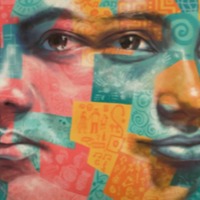
Jasmine
There are an estimated 403,000 people living in modern slavery in the United States (GSI 2018). Sex trafficking exists throughout the country. Traffickers use violence, threats, lies, debt bondage and other forms of coercion to compel adults and children to engage in commercial sex acts against their will. The situations that sex trafficking victims face vary, many victims become romantically involved with someone who then forces them into prostitution. Others are lured with false promises of a job, and some are forced to sell sex by members of their own families. Victims of sex trafficking include both foreign nationals and US citizens, with women making up the majority of those trafficked for the purposes of commercial sexual exploitation. In 2015, the most reported venues/industries for sex trafficking included commercial-front brothels, hotel/motel-based trafficking, online advertisements with unknown locations, residential brothels, and street-based sex trafficking. Jasmine was trafficked at the age of 18 in Connecticut, USA. She grew up in Saugus and Revere, where she started dating a man who coerced her into sex trafficking.
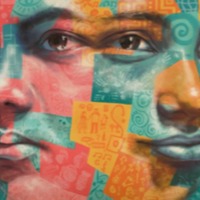
Joanna
From Joanna’s narrative it is unclear in which country Joanna experienced her exploitation. She was trafficked into prostitution abroad at the age of eighteen by the man she loved and the father of her child. After a while, her traffickers left her on the streets and she was picked up by police and taken to prison while they found a translator to communicate with her. When she was taken back home, her family and community had disowned her and she became homeless. She was helped by a woman who took her to a clinic for women who had experienced the same things she had.
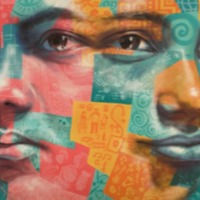
Hannah
There are an estimated 403,000 people living in conditions of modern slavery in the United States (GSI 2018). The US attracts migrants and refugees who are particularly at risk of vulnerability to human trafficking. Trafficking victims often responding to fraudulent offers of employment in the US migrate willingly and are subsequently subjected to conditions of involuntary servitude in industries such as forced labour and commercial sexual exploitation. Hannah experienced the world of sexual exploitation and forced labour when her foster parents adopted her at the age of 12, in Texas, USA.
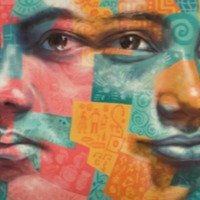
Bianca
There are an estimated 403,000 people living in modern slavery in the United States (GSI 2018). Sex trafficking exists throughout the country. Traffickers use violence, threats, lies, debt bondage and other forms of coercion to compel adults and children to engage in commercial sex acts against their will. The situations that sex trafficking victims face vary, many victims become romantically involved with someone who then forces them into prostitution. Others are lured with false promises of a job, and some are forced to sell sex by members of their own families. Victims of sex trafficking include both foreign nationals and US citizens, with women making up the majority of those trafficked for the purposes of commercial sexual exploitation. In 2015, the most reported venues/industries for sex trafficking included commercial-front brothels, hotel/motel-based trafficking, online advertisements with unknown locations, residential brothels, and street-based sex trafficking. Bianca began speaking to a man she had met online and when she turned sixteen, she left home and travelled to see him. She went to Vegas where the man trafficked her into prostitution. He threatened to kill anyone that tried to take her home and forced Bianca to start taking drugs. She was finally able to leave and later heard that he had been arrested.
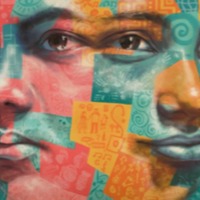
Caroline
There is an estimated 48,000 people living in modern slavery in Libya (GSI 2018). Libya is a major transit destination for migrants and refugees hoping to reach Europe by sea. Human trafficking networks have prospered amid lawlessness, created by the warring militias that have been fighting for control of territories since the toppling of Muammar Gaddafi in 2011. Highly organized trafficking and migrants smuggling networks that reach into Libya from Niger, Nigeria, Chad, Eritrea, Ethiopia, Somalia, Sudan, and other sub-Saharan states subject migrants to forced labor and forced prostitution through fraudulent recruitment, confiscation of identity and travel documents, withholding or non-payment of wages, debt bondage, and verbal, physical, and sexual abuse. In some cases, migrants reportedly pay smuggling fees to reach Tripoli, but once they cross the Libyan border they are sometimes abandoned in southern cities or the desert where they are susceptible to severe forms of abuse and human trafficking. Caroline thought she was travelling to Europe with her boyfriend, but he sold her to a woman who took her to Libya and sold her on again to another man. She was taken to Tripoli and forced into prostitution. After Caroline escaped prostitution, she went to live in a residential house. But this house was raided and she was put in a prison where she was subjected to physical and sexual abuse daily. She was finally able to escape the prison by jumping a fence and found herself at a place where people were getting on a boat to Italy. She joined them, but the journey was not easy.

Galyna
There are an estimated 794,000 people living in conditions of modern slavery in Russia (GSI 2018). Women and children are subjected to commercial sexual exploitation and sex trafficking in prostitution and pornography. Women are lured by the promise of lucrative employment and a new location, travelling to the country under the pretence of legitimate employment and a better life. However, when they arrive, they are forced into prostitution in brothels, hotels and saunas. There is also evidence of traffickers advertising sexual services of children online. However, despite the evidence of sex trafficking in Russia, it remains an under-recognised area of enslavement in the country. Galyna*, a 25-year-old woman from Donetsk (Ukraine) worked at a bar in Moscow. In addition to dancing, her employer forced her to perform sex-services for clients, though this was not agreed prior to employment. She had no written contract and received payment from clients and her employer in cash. She was also forced to perform services, such as unprotected sex, under threat of non-payment and dismissal. No social security or health care was provided, and she had no registered place of residence. When stopped by the police in the street, she had to pay bribes. Her relatives in Ukraine did not know what she was doing in Moscow. She sent money home to help her parents and hoped to find another job. Only migrants work at the club and they knew next to nothing about their employer.
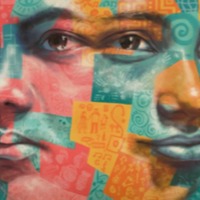
Aizere
There are an estimated 794,000 people living in conditions of modern slavery in Russia (GSI 2018). Women and children are subjected to commercial sexual exploitation and sex trafficking in prostitution and pornography. Women are lured by the promise of lucrative employment and a new location, travelling to the country under the pretence of legitimate employment and a better life. However, when they arrive, they are forced into prostitution in brothels, hotels and saunas. There is also evidence of traffickers advertising sexual services of children online. However, despite the evidence of sex trafficking in Russia, it remains an under-recognised area of enslavement in the country. Aizere*, A 16-year old girl from Kazakhstan was sold by her parents to a man who promised her work at a market. Her documents were forged and upon arrival in Russia she was forced into prostitution.
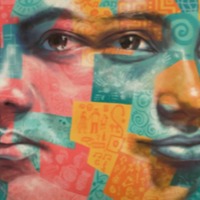
Alina
There are an estimated 794,000 people living in conditions of modern slavery in Russia (GSI 2018). Forced labour remains the predominant form of human trafficking in the country. Labour trafficking has been reported in the construction, manufacturing, logging, textile, and maritime industries, as well as in sawmills, agriculture, sheep farms, grocery and retail shops, restaurants, waste sorting, street sweeping, domestic service, and forced begging. Many migrant workers experience exploitative labour conditions characteristic of trafficking cases, such as withholding of identity documents, non-payment for services rendered, physical abuse, lack of safety measures, or extremely poor living conditions. Alina*, a 23-year-old woman from the Ukraine was involved in voluntary prostitution and subsequent commercial sexual exploitation.
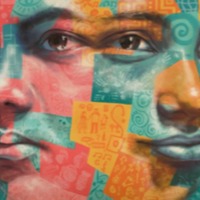
Marcela Loaiza (Narrative 2)
There are an estimated 37,000 people living in modern slavery in Japan (GSI 2018). The country is the destination for men, women and children trafficked for forced labour and commercial sexual exploitation. The majority of trafficking victims are foreign women who migrate willingly seeking work but find themselves trapped in debt bondage, having to work in domestic and sex work to pay off fees incurred. Despite warning from the U.N., it is reported that human trafficking is on the rise in Japan. Marcela Loaiza was 21 years old when she was lured from Colombia, trapped in a sex trafficking ring, and forced by Japan’s Yakuza mafia to sell sex on the streets of Tokyo. After 18 months of sexual exploitation, she escaped, so ill that her hair and teeth were falling out. Today Loaiza, 35, runs a non-governmental organisation that bears her name to raise awareness about human trafficking among girls, women and men in Colombia and the United States, where she now lives. Loaiza spoke with Thomson Reuters Foundation by telephone from the Colombian city of Cali and recalled how she escaped forced prostitution and the mafia, and how she moved past the pain and guilt and healed.
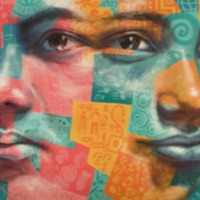
Emelia
There are an estimated 136,000 people living on conditions of modern slavery in the United Kingdom (Global Slavery Index 2018). According to the 2017 annual figures provided by the National Crime Agency, 5, 145 potential victims of modern slavery were referred through the National Referral Mechanism in 2017, of whom 2,454 were female, 2688 were male and 3 were transgender, with 41% of all referrals being children at the time of exploitation. People are subjected to slavery in the UK in the form of domestic servitude, labour exploitation, organ harvesting and sexual exploitation, with the largest number of potential victims originating from Albania, China, Vietnam and Nigeria. This data however does not consider the unknown numbers of victims that are not reported. Emelia was trafficked from Romania to the UK by a man who kept her for 3 months. Subjected to sexual violence, she was forced into prostitution where she was raped by at least seven or eight men daily. Emelia was able to escape after borrowing a girl’s phone and calling her parents. However, the man who trafficked her escaped the police and she remains is scared of retribution
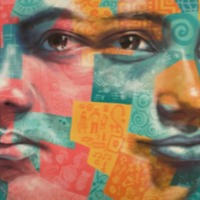
Grace
There are an estimated 136,000 people living on conditions of modern slavery in the United Kingdom (Global Slavery Index 2018). According to the 2017 annual figures provided by the National Crime Agency, 5, 145 potential victims of modern slavery were referred through the National Referral Mechanism in 2017, of whom 2,454 were female, 2688 were male and 3 were transgender, with 41% of all referrals being children at the time of exploitation. People are subjected to slavery in the UK in the form of domestic servitude, labour exploitation, organ harvesting and sexual exploitation, with the largest number of potential victims originating from Albania, China, Vietnam and Nigeria. This data however does not consider the unknown numbers of victims that are not reported. Grace was trafficked from Nigeria to the UK into forced prostitution by a local woman who used the traditional African belief of Juju to threaten her. Eventually she escaped and told the police what happened but her trafficker and the woman that sold her fled the UK.
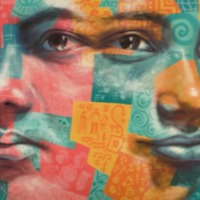
Tanya
The Global Slavery Index 2018 estimates that on any given day in 2016, an estimated 3.6 million men, women and chidlren were living in modern slavery in Europe and Central Asia (GSI 2018). People are subjected to exploitation in forced labour, debt bondage and forced sexual exploitation. Government response in Europe is particularly strong with a number of regional bodies holding them account and monitoring responses, and while countries in Central Asia have taken steps to tack modern slavery, more needs to be done. Tanya was trafficked from Ukraine after being offered a job in another country. Her brother was sick and in need of an operation and her family was poor. She was sold and forced into prostitution.

Natasha
There are an estimated 136,000 people living on conditions of modern slavery in the United Kingdom (Global Slavery Index 2018). According to the 2017 annual figures provided by the National Crime Agency, 5, 145 potential victims of modern slavery were referred through the National Referral Mechanism in 2017, of whom 2,454 were female, 2688 were male and 3 were transgender, with 41% of all referrals being children at the time of exploitation. People are subjected to slavery in the UK in the form of domestic servitude, labour exploitation, organ harvesting and sexual exploitation, with the largest number of potential victims originating from Albania, China, Vietnam and Nigeria. This data however does not consider the unknown numbers of victims that are not reported. “Natasha” shares her story of being bought and sold from Romania to Italy and on to Germany and Belgium. Her final stop was Britain where she was put to work in a north London sauna. “Natasha” was finally freed from her nightmare in a police raid, a year after her abduction.

Anya and Katerina
There are an estimated 509,000 people living in modern slavery in Turkey (GSI 2018). As a source, transit and destination location for immigration, human trafficking is prevalent in the country. Trafficking victims in Turkey are primarily from Central and South Asia, Eastern Europe, Azerbaijan, Indonesia, Morocco, and Syria. Women are mainly trafficked to Turkey as sex workers. Anya and Katerina were trafficked to Turkey by a woman named Olga who offered them a job. She took them to a café where they were taken by men to an apartment. That first night they were told to get dressed for work, taken to a hotel, and forced into prostitution.
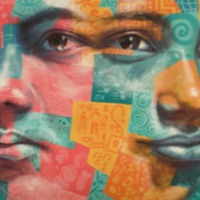
Katia
There are an estimated 509,000 people living in modern slavery in Turkey (GSI 2018). As a source, transit and destination location for immigration, human trafficking is prevalent in the country. Trafficking victims in Turkey are primarily from Central and South Asia, Eastern Europe, Azerbaijan, Indonesia, Morocco, and Syria. Women are mainly trafficked to Turkey as sex workers. Katia was trafficked into commercial sexual exploitation from Ukraine to Turkey. She was drugged and beaten and forced to sleep with men against her will on a daily basis.
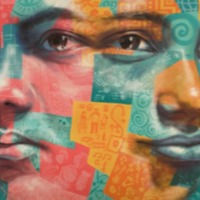
Kat Rosenblatt
There are an estimated 403,000 people living in modern slavery in the United States (GSI 2018). Sex trafficking exists throughout the country. Traffickers use violence, threats, lies, debt bondage and other forms of coercion to compel adults and children to engage in commercial sex acts against their will. The situations that sex trafficking victims face vary, many victims become romantically involved with someone who then forces them into prostitution. Others are lured with false promises of a job, and some are forced to sell sex by members of their own families. Victims of sex trafficking include both foreign nationals and US citizens, with women making up the majority of those trafficked for the purposes of commercial sexual exploitation. In 2015, the most reported venues/industries for sex trafficking included commercial-front brothels, hotel/motel-based trafficking, online advertisements with unknown locations, residential brothels, and street-based sex trafficking. Kat Rosenblatt grew up in an abusive home in South Florida. After her mother left her father and too Kat to a hotel, Kat was befriended by a young girl who over the course of a month groomed her into sex tourism. The first time Kat Rosenblatt’s traffickers attempted to sell her to an older man, she resisted and was left for dead in the street. Though she was able to escape this situation, Kat was trafficked again by a friend’s father who later planted drugs in her school bag. Kat was suspended and became a drug addict. However, after overcoming her addictions, Kat obtained a PhD, wrote a book about her experience and founded her organisation There Is Hope For Me.
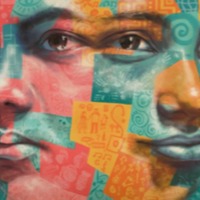
Sharmila Wijeyakumar
There are an estimated 403,000 people living in modern slavery in the United States (GSI 2018). Sex trafficking exists throughout the country. Traffickers use violence, threats, lies, debt bondage and other forms of coercion to compel adults and children to engage in commercial sex acts against their will. The situations that sex trafficking victims face vary, many victims become romantically involved with someone who then forces them into prostitution. Others are lured with false promises of a job, and some are forced to sell sex by members of their own families. Victims of sex trafficking include both foreign nationals and US citizens, with women making up the majority of those trafficked for the purposes of commercial sexual exploitation. In 2015, the most reported venues/industries for sex trafficking included commercial-front brothels, hotel/motel-based trafficking, online advertisements with unknown locations, residential brothels, and street-based sex trafficking. Sharmila ran away from her home when she was a teenager. She found herself working in a nightclub where she was trafficked for commercial sexual exploitation. Sharmila was helped to escape by a patron of the brothel where she was being kept. However, finding herself homeless she agreed to work in another brothel. She was rescued by her family from the second brothel. While training to be a chef in Florida, Sharmila finally felt safe enough to share her trafficking experience with people she knew. However, 48 hours after doing so, she was trafficked for a third time. A church helped Sharmila escape these traffickers and she now works for the organisation Rahab’s Daughters to help other people escape their traffickers.
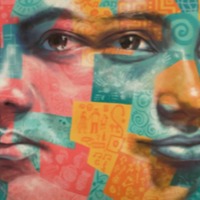
Robin Flemming
There are an estimated 403,000 people living in modern slavery in the United States (GSI 2018). Sex trafficking exists throughout the country. Traffickers use violence, threats, lies, debt bondage and other forms of coercion to compel adults and children to engage in commercial sex acts against their will. The situations that sex trafficking victims face vary, many victims become romantically involved with someone who then forces them into prostitution. Others are lured with false promises of a job, and some are forced to sell sex by members of their own families. Victims of sex trafficking include both foreign nationals and US citizens, with women making up the majority of those trafficked for the purposes of commercial sexual exploitation. In 2015, the most reported venues/industries for sex trafficking included commercial-front brothels, hotel/motel-based trafficking, online advertisements with unknown locations, residential brothels, and street-based sex trafficking. Robin Flemming was 20 years old when she met a man who seemed like everything she was looking for. He was loving, caring and promised her the world. It wasn’t until she moved to Texas to live with him that he began using her for profit. Flemming’s trafficker, whom she now refers to as “the monster,” brought her to a club one day and told her she was going to audition to be a dancer. During her first night of dancing, she earned $3,000. Throughout their marriage, they moved across the country and lived in more than six states. Flemming said her trafficker abused her verbally and mentally, raped her numerous times and occasionally kicked out of her home, leaving her with no place to go. After secretly stashing money at work, Flemming raised about $10,000, which she used to escape from her trafficker. She went to work one day and decided that she would not come back. It wasn't until two and a half years later that her trafficker finally started leaving her alone. Flemming was able to divorce her trafficker in 2007, a year after she saw him for the last time. She then had to work to get her life back to normal. Flemming stayed in exotic dancing for six more years. After counseling, continuous nightmares and a year of being sober, her life has returned to normal. She now lives in Columbia with her husband and daughter and runs a day-care. She is currently trying to repair her relationship with her other daughter, who also lives in Columbia and is married.
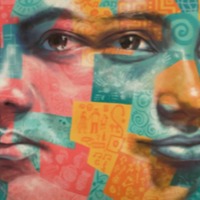
Gaby
There are an estimated 403,000 people living in modern slavery in the United States (GSI 2018). Sex trafficking exists throughout the country. Traffickers use violence, threats, lies, debt bondage and other forms of coercion to compel adults and children to engage in commercial sex acts against their will. The situations that sex trafficking victims face vary, many victims become romantically involved with someone who then forces them into prostitution. Others are lured with false promises of a job, and some are forced to sell sex by members of their own families. Victims of sex trafficking include both foreign nationals and US citizens, with women making up the majority of those trafficked for the purposes of commercial sexual exploitation. In 2015, the most reported venues/industries for sex trafficking included commercial-front brothels, hotel/motel-based trafficking, online advertisements with unknown locations, residential brothels, and street-based sex trafficking. Gaby was suffering from drug and alcohol addiction when she posted an ad online to find a job in modelling or web-camming. Her ad was answered by a college professor who rented an apartment for her and other women to stay in where men would come in to purchase sex. Gaby was afraid to leave because her trafficker had all of her information. He had her ID, her social security card, and he knew where she lived. Gaby was in a controlled environment where she was allowed to leave. She always went back because she was afraid of what would happen if she didn't. One day she found a church, went inside, and wrote a suicide note on a prayer card. The church's female pastor found the note and tracked down Gaby. The pastor told her to not go back and she gave Gaby a place to stay in her family's home. Gaby never went back, she went to rehab and became part of Wellspring Living Program for young girls and women who have been trafficked. She now supports herself with a government job and is raising her 8-year old son.
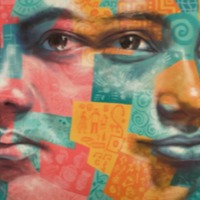
Terry Forliti
There are an estimated 403,000 people living in modern slavery in the United States (GSI 2018). Sex trafficking exists throughout the country. Traffickers use violence, threats, lies, debt bondage and other forms of coercion to compel adults and children to engage in commercial sex acts against their will. The situations that sex trafficking victims face vary, many victims become romantically involved with someone who then forces them into prostitution. Others are lured with false promises of a job, and some are forced to sell sex by members of their own families. Victims of sex trafficking include both foreign nationals and US citizens, with women making up the majority of those trafficked for the purposes of commercial sexual exploitation. In 2015, the most reported venues/industries for sex trafficking included commercial-front brothels, hotel/motel-based trafficking, online advertisements with unknown locations, residential brothels, and street-based sex trafficking. A series of traumatic events lead to a 30-year drug addiction for Terry Forliti. After her addiction lead to the breakdown of an abusive marriage, Terry found herself on the streets. She met a man who would eventually become her pimp and force her into prostitution for the next five years. Terry was eventually arrested and while spending time in jail was introduced to the Breaking Free organization who offered a housing programme to poor mothers trapped in prostitution. Terry spent three years in the programme, obtained a BA and began working for the organization helping others who had been through similar experiences